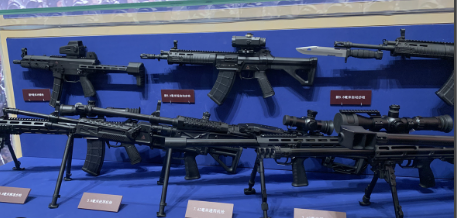China’s arms exports are facing a sharp decline, primarily attributed to concerns over poor quality and inconsistent performance, posing potential risks to the countries purchasing Chinese weaponry. Analysts have noted a nearly 25% drop in China’s arms exports over the past decade, raising questions about the reliability of its military equipment.
According to a report by Directus, China’s arms exports have suffered due to issues related to quality and performance. This decline is a cause for concern, as it has implications for the countries that rely on Chinese arms. Furthermore, China’s own People’s Liberation Army (PLA) has grappled with the problem of low-quality weapons, further underscoring the issue.
The Stockholm International Peace Research Institute (SIPRI) has reported a 7.8% decrease in China’s arms shipments between 2016 and 2020 compared to the preceding five-year period. This has resulted in a reduction in China’s global market share from 5.6% to 5.2%. Initially, there was a growing demand for Chinese weaponry due to its competitive pricing. However, this demand began to wane as Chinese armaments failed to perform as promised.
Cindy Zheng, a researcher at the think tank RAND Corporation, highlighted the hidden costs associated with China’s military equipment. “China attracts customers for its military equipment with cut-rate pricing and financing, but there are hidden costs—especially when gear malfunctions,” Zheng explained. Compatibility issues with Chinese military equipment have proven to be particularly costly.
China currently supplies weapons to more than 53 nations, with a focus on markets not traditionally served by major arms suppliers like the United States or France. Major importers of Chinese armaments include countries such as Pakistan, Myanmar, and Bangladesh, as well as various African and Middle Eastern nations.
Alexander Vuving, a professor at the Daniel K Inouye Asia-Pacific Centre for Security Studies, emphasized the concerns surrounding Chinese military gear. “China-made weapons are not just technologically inferior; they also remain untested on the battlefield,” Vuving noted.
Several incidents have highlighted the challenges faced by countries purchasing Chinese military equipment. Myanmar, for instance, expressed concerns about the low accuracy of radar systems on Chinese jets it acquired, leading to the grounding of most of these aircraft due to technical issues. Nigeria was compelled to return seven out of nine Chengdu F-7 fighters to China due to maintenance problems. Pakistan, a close ally of China, encountered difficulties with Chinese-made navy warships, including engine degradation, sensor malfunctions, and missile system issues.
Collin Koh, a maritime security analyst based in Singapore, pointed out that many countries are worried about the lack of combat testing for most Chinese hardware. Additionally, integrating Chinese systems with non-Chinese counterparts has become a challenge, leading to political tensions and compatibility issues.
Andrei Serbin, a geopolitical intelligence expert and director of the Argentine think tank CRIES, highlighted the lower certification standards for Chinese military equipment compared to Western counterparts. NATO countries, for example, share standards of excellence that endorse technology certifications, which China lacks.
The decline in China’s arms exports due to quality and performance concerns underscores the complex landscape of international arms trade and the importance of reliability and compatibility in military equipment acquisitions.








 India
India












